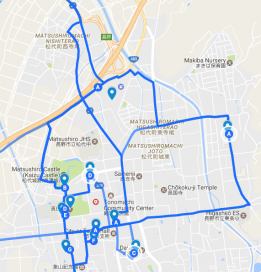written by Tyler
Nagano City’s Matsushiro (松代, Matsushiro) neighborhood is an old samurai town. From the early 1600’s, the town was the center of the Matsushiro Domain (松代藩, ‘Matsushiro han‘), with 10 generations of the Sanada clan ruling from 1622 until the Meiji Restoration. From the Warring States Period to the opening of the Japan during the era of Admiral Perry’s Black Ships and on further to World War II, Matsushiro gives visitors insights into Japan’s history through its active role in that greater story. And from ceramics to onsens, and schooling to farming, the town continues to contribute to Japan’s cultural heritage. Tyler, a resident of Nagano Prefecture since 2005, gives his tips on seeing Japan, past and present, through the window that is Matsushiro.
(Nagano City, Matsushiro District, population 17,616 [Mar. 2017])
Day 1
- 10:30

- Arrival / Matsushiro Station [1] in the map below.
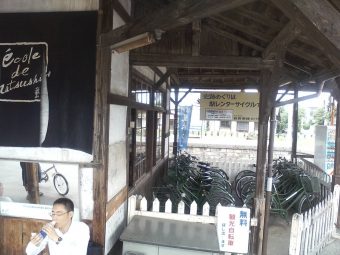
Matsushiro is conveniently connected to Nagano Station via bus (approx. twice per hour, 30 min., ‘Matsushiro Sta.’ bus stop) with additional bus service to Yashiro Station (Shinano Railway line) and Suzaka Station (Nagano Dentetsu line). The town is fairly compact and level so is suitable for walking. However, renting a bicycle at Matsushiro Station will provide much more mobility. Put your luggage in a coin locker if you need and rent a bicycle. (Rental cycles also available at the Machi-Aruki [Town Walking] Center.) From the station, head over to Matsushiro Castle to see the lay of the land, just like the feudal lord used to do.
- 11:00

- Matsushiro Castle 松代城 [2]
Matsushiro Castle is a National Historic Site and is one of Japan’s Top 100 Castles. The powerful Warring States Era warlord Takeda Shingen built a castle on this site in 1560, and it played a major role in the Kawanakajima series of battles (more on that later). Today, 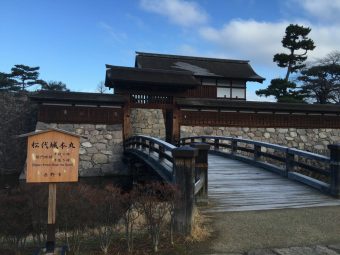 only some of the original stonework remains but an impressive entrance gate and walls have been reconstructed using techniques and materials true to the original design.
only some of the original stonework remains but an impressive entrance gate and walls have been reconstructed using techniques and materials true to the original design.
At the gate, see if you pick out which sections of the stonework are original. Then pass through and walk to the top of the viewing platform. You will be rewarded with a 360-degree panoramic vista of the Zenkoji Plain and the surrounding mountains. The daimyo (lord) used to be able to look out over his domain. In particular, note the location of the Kawanakajima field across Chikuma River to the north and Saijosan Mountain to the southwest, all instrumental in the local samurai battles.
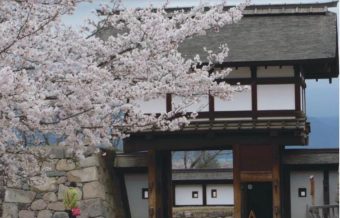
Matsushiro Castle’s cherry trees usually are in bloom in mid-April
Now that you have your bearings, it’s time for a tour of Matsushiro. This route will roughly take you chronologically through the town’s past, with insights into Japan’s overall history along the way. First is the longest bike ride of the tour. Take Route 35 north across the Chikuma River 3.5 km to the Hachiman-para Historical Park, aka the Kawanakajima Battle Site. (If on foot, take Bus #30 from ‘Matsumoto Sta.’ stop back towards Nagano Statiaon 2 stops to the ‘Kawanakajima Kosenjo’ stop.)
- 11:30

- Kawanakajima Battle Site 川中島古戦場 [3]
The afore-mentioned samurai warlord Takeda Shingen from near Mt. Fuji and his arch rival 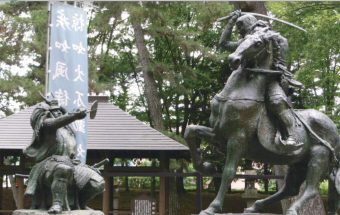 Uesugi Kenshin from the Sea of Japan side clashed over territory during the Warring States Era. Nagano was caught in the middle and from 1553 to 1564, the two held a series of battles here at Kawanakajima. In the center of the park is a statue depicting the most famous scene, with Kenshin on horse back, sword out ready to slice off his opponent’s head, and Shingen defending himself with a shield. Legend says that Shingen’s trusty assistant fended off Kenshin with a spear, and later stabbed the spear into a rock. Today, you can see the rock with the spear hole still in it. The dramatic story leading up to that climax involves a one-eyed general’s midnight crossing of the Chikuma River and a secret counter-attack by Kenshin from his fortress atop Saijosan Mountain. (Remember seeing those from Matsushiro Castle?)
Uesugi Kenshin from the Sea of Japan side clashed over territory during the Warring States Era. Nagano was caught in the middle and from 1553 to 1564, the two held a series of battles here at Kawanakajima. In the center of the park is a statue depicting the most famous scene, with Kenshin on horse back, sword out ready to slice off his opponent’s head, and Shingen defending himself with a shield. Legend says that Shingen’s trusty assistant fended off Kenshin with a spear, and later stabbed the spear into a rock. Today, you can see the rock with the spear hole still in it. The dramatic story leading up to that climax involves a one-eyed general’s midnight crossing of the Chikuma River and a secret counter-attack by Kenshin from his fortress atop Saijosan Mountain. (Remember seeing those from Matsushiro Castle?)
After all that samurai excitement, you’ll likely be hungry for lunch. There are some noodle shops in the park, or back along Route 35 towards Matsushiro is the giant Oginoya restaurant. Their claim to fame is a rice bowl topped with hearty ingredients served in a clay bowl that you can take home as a souvenir.
On the way back to Matsushiro from the Kawanakajima Battle Site and/or the Oginoya restaurant, an optional stop is Tenkyu-ji Temple 典厩寺 [4]. Takeda Shingen’s younger brother is buried here, and there is a menacing 5-meter tall statue of Enma, a demon from the underworld. (Note: Not advised for the faint of heart.)
- 13:30

- Former Sanada Residence [4], Literary and Military Arts School [5], and the Yokota House [6] 真田邸、文武学校、旧横田家住宅
Crossing back over the Chikuma River, to the Sanada Residence just south of Matsushiro 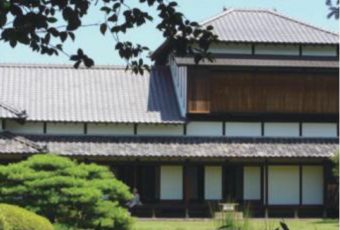 Station will fast-forward you through time from the violent Warring States Era to the more stable and genteel Edo Period. The Residence’s beautifully restored house and gardens convey the cultured sophistication of the lifestyle of the Sanada Clan, rulers of the Matsushiro Domain for 10 generations. In 1853, Sanada Yukinori (9th generation) built the Literary and Military Arts School (bunbu gakko), a sign of the samurai’s aristocratic nature of the times. A discount ticket that covers both the Sanada Residence and the Samurai School as well as the adjacent Sanada Museum is available. Nearby is the old Yokota Residence, the well-preserved home of a middle-class samurai. Touring these sites will give you an intimate look at what samurai life was like during the Edo era.
Station will fast-forward you through time from the violent Warring States Era to the more stable and genteel Edo Period. The Residence’s beautifully restored house and gardens convey the cultured sophistication of the lifestyle of the Sanada Clan, rulers of the Matsushiro Domain for 10 generations. In 1853, Sanada Yukinori (9th generation) built the Literary and Military Arts School (bunbu gakko), a sign of the samurai’s aristocratic nature of the times. A discount ticket that covers both the Sanada Residence and the Samurai School as well as the adjacent Sanada Museum is available. Nearby is the old Yokota Residence, the well-preserved home of a middle-class samurai. Touring these sites will give you an intimate look at what samurai life was like during the Edo era.
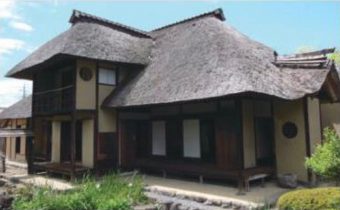
Yokota Residence — a unique opportunity to see how real samurai lived.
- 14:30

- Zozan Shrine and Sakuma Zozan 象山神社・佐久間象山 [7]
The relative quiet Edo era came to an end with the arrival of Admiral Perry’s Black Ships in 1853 culminating in the Meiji Restoration in 1868. A few blocks west of the Yokota
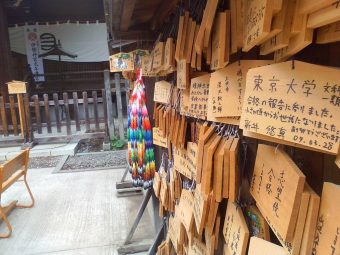
Zozan Shrine, popular with students praying for success at school.
Residence is Zozan Shrine which is dedicated to Sakuma Zozan (1811-1864). He was an inventor and scholar and helped lead the push to open Japan to Western technology and ideas. On the grounds of the shrine is Kogitei (高義亭), the building where Zozan held many of his debates. Zozan is an important figure in Japan’s transition from the closure (Edo era) to openness (Meiji era). For more on this renaissance man, including many of his writings and drawings, visit the Zozan Museum 2 blocks to the east.
- 15:30

- Zozan Underground Imperial Headquarters 象山地下壕 [8]
From Zozan Shrine, traveling approx. 250 meters south will bring you from the tumultuous 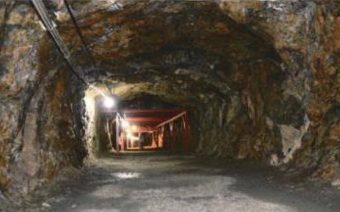 1850’s and 60’s to 1944-5 and the close of World War II. Near the end, the Imperial government started to build an emergency headquarters under Matsushiro’s Mt. Zozan. Many forced laborers lost their lives during the construction. Today, the Zozan Underground Imperial Headquarters is a partially open to the public as a reminder of the need for peace in the world.
1850’s and 60’s to 1944-5 and the close of World War II. Near the end, the Imperial government started to build an emergency headquarters under Matsushiro’s Mt. Zozan. Many forced laborers lost their lives during the construction. Today, the Zozan Underground Imperial Headquarters is a partially open to the public as a reminder of the need for peace in the world.
- 16:30

- Late Tea Time, Hotel Check-In, and Dinner
After resurfacing, head back to central Matsushiro to Tsutaya (蔦屋) [9], one of the town’s best pastry shops, for a well-deserved late-afternoon snack. Then return your bicycles 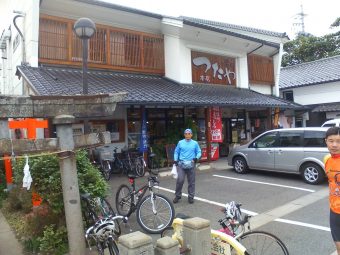 and retrieve your luggage to check-in at your place of lodging. Speaking of which, two drastically different choices for accommodation are the towering, modern Matsushiro Royal Hotel [10] and nostalgic Matsushiro Guesthouse Hoteiya [11] located in a renovated old townhouse. For dinner, options abound from soba restaurants to yakitori (chicken shishkabob) joints. If you want to try a local specialty, Umetaya features dishes with nagaimo, a Chinese yam grown in Matsushiro’s sandy soil along the Chikuma river.
and retrieve your luggage to check-in at your place of lodging. Speaking of which, two drastically different choices for accommodation are the towering, modern Matsushiro Royal Hotel [10] and nostalgic Matsushiro Guesthouse Hoteiya [11] located in a renovated old townhouse. For dinner, options abound from soba restaurants to yakitori (chicken shishkabob) joints. If you want to try a local specialty, Umetaya features dishes with nagaimo, a Chinese yam grown in Matsushiro’s sandy soil along the Chikuma river.
Day 2
- 9:30

- Hot Spring Bath in Matsushiro’s Rust-Colored Onsen Water 松代温泉 [12]
Day 1 covered Matsushiro’s past, from the Warring States period a la the Kawanakajima Battle Site and Edo era with the Sanada Residence, to the Meiji Restoration with Zozan and the WWII underground HQ remains. So what makes Matsushiro tick nowadays? Last night’s nagaimo yam was just a sample of some of the outstanding produce grown in and around the town. And the local uniquely colored pottery style, Matsushiro-yaki, continues to be popular. But first, check out Matsushiro’s unusual hot spring mineral
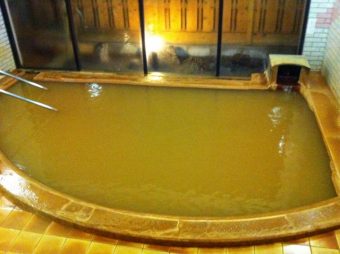
Matsushiro Onsen’s iron-rich mineral waters (Pictured: Matsushiro-so)
baths. The natural mineral water has a high iron content, giving the baths a rich, rusty-colored hue. Dip in a white washcloth, and it comes out a deep orange color. As with accommodation choices, there are two very different bath houses. If you can’t decide, you can always try both! Matsushiro-so is a government-operated bathing facility (overnight accommodation also available) with relatively modern conveniences. Ichiyou-kan is decidedly more, err, rustic. The indoor baths are divided men’s and women’s, but the outdoor baths, accessed via a very exposed pathway, are mixed bathing and hence, require courage. Regardless of which bath house you choose, no visit to Matsushiro would be complete without a soak in the onsen here. Matsushiro-sho and Ichiyou-kan are located near each other approx. 1.5 km east from the town center, perfect for accessing via bicycle.
- 10:45

- Matsushiro-yaki Pottery 松代陶苑 [13]
Located 2 km west from the center of town (again, easy access by cycling) is Matsushiro To-en, mecca for Matsushiro-yaki pottery. Using the ash from apple wood, the distinctive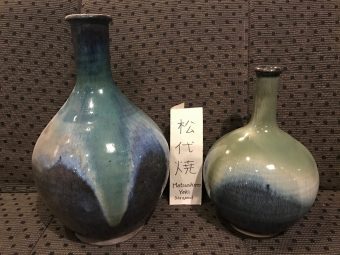 glaze creates an aurora borealis-like blueish-green hue. The shop features works by the in-house ceramic artists and you can watch their techniques at the workshop. With reservations in advance, you, too, can sit at a throwing wheel and make a tea cup, bowl, dish, or other original creation. Just be aware that the kiln process takes a month which may necessitate overseas shipping if you’ve already returned to your home abroad.
glaze creates an aurora borealis-like blueish-green hue. The shop features works by the in-house ceramic artists and you can watch their techniques at the workshop. With reservations in advance, you, too, can sit at a throwing wheel and make a tea cup, bowl, dish, or other original creation. Just be aware that the kiln process takes a month which may necessitate overseas shipping if you’ve already returned to your home abroad.
- 12:00

- Light Lunch at Teramachi Shoka 松代寺町商家 [14]
Back in the center of Matsushiro is an old merchant’s house that has been painstakingly restored and is open for guests to visit. Teramachi Shoka also serves light snacks and 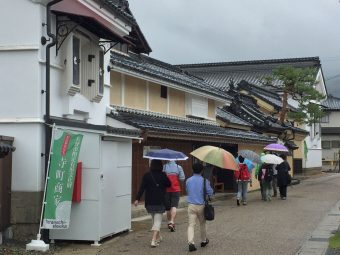 beverages, and with enough advanced notice, can provide a creative lunch using locally-sourced ingredients. It would be the perfect way to finish your stay in Matsushiro.
beverages, and with enough advanced notice, can provide a creative lunch using locally-sourced ingredients. It would be the perfect way to finish your stay in Matsushiro.
In your short stay in Matsushiro, you’ve likely managed to pack a lot of great experiences as well as meet many of the friendly locals. There is so much more to see and do, such as Chokuku-ji Temple with its striking architecture and burial tomb of the first Sanada Clan lord, and culture classes from école de Matsushiro. Seasonally, mid-April is cherry blossom season (Matsushiro Castle and Tenkyu-ji Temple are especially popular). And early summer means fruit picking, notably apricots and cherries, with fall being nagaimo yam harvest. Additionally, we can’t forget Minakami-yama, the pyramid-shaped mountain behind the town that is rumored to be a UFO hot spot. There’s always next time…
Return to Matsushiro Station for your bus back to Nagano Station.

